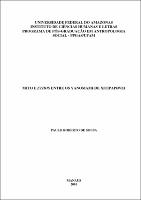| ???jsp.display-item.social.title??? |


|
Please use this identifier to cite or link to this item:
https://tede.ufam.edu.br/handle/tede/3954Full metadata record
| DC Field | Value | Language |
|---|---|---|
| dc.creator | Sousa, Paulo Roberto de | - |
| dc.creator.Lattes | http://lattes.cnpq.br/1483805285236016 | por |
| dc.contributor.advisor1 | Pacheco, Frantomé Bezerra | - |
| dc.contributor.advisor1Lattes | http://lattes.cnpq.br/8521290245767828 | por |
| dc.contributor.advisor-co1 | Bruno, Ana Carla dos Santos | - |
| dc.contributor.advisor-co1Lattes | http://lattes.cnpq.br/4630421803618286 | por |
| dc.date.issued | 2010-06-30 | - |
| dc.identifier.citation | SOUSA, Paulo Roberto de. Mito e Ethos entre os Yanomami de Xitipapiwei. 2010. 172f. Dissertação (Mestrado em Antropologia Social) - Universidade Federal do Amazonas, Manaus, 2010. | por |
| dc.identifier.uri | http://tede.ufam.edu.br/handle/tede/3954 | - |
| dc.description.resumo | Esta dissertação pretende desenvolver considerações a cerca do ethos yanomam expresso nos mitos narrados pelos Yanomam da aldeia de Xitipapiwei no rio Marauiá, (no município de Santa Isabel do Rio Negro no Estado do Amazonas). O trabalho tem como ponto de partida a análise de três wãnowãno ‘mitos’ yanomami Hewëriwë ‘Homem-morcego’, Ira, Opo, Kumararotawë ‘Onça, tatu e centopéia’ e Tõm riyoma ‘Mulher-cutia’. Para isso, serão considerados aqui os pressupostos teóricos da análise pragmática, bem como a concepção de ethos (a qual está alicerçada em uma ética-discursiva) postulado pela Teoria da Racionalidade 1 Comunicativa (cujo principal representante é o filósofo alemão Jürgen Habermas ). Com isso 2 pretende-se estabelecer uma reflexão a respeito de como o ethos é expresso nos wãno yanomam e ampliar, desta forma, a compreensão de suas relações sociais. | por |
| dc.description.abstract | This thesis seeks to develop considerations about the ethos expressed in the myths narrated by the Yanomami village of the river Xitipapiwei Marauiá (in Santa Isabel do Rio Negro in Amazonas State). The work has as starting point for analysis of three wãnowãno 'myths' Yanomami Hewëriwë 'man-bat' Ira, Opo, Kumararotawë 'jaguar, armadillo and centipede' and Tom riyoma 'Woman agouti' To do so, shall be considered here the theoretical assumptions of pragmatic analysis, as well as the design ethos (which is based on an ethics-discursive) postulated by the Theory of Communicative Rationality (whose chief representative is the German philosopher Jürgen Habermas). With this we intend to establish a reflection on how the ethos is expressed in Wano Yanomam and expand, thus understanding their social relations. | eng |
| dc.description.sponsorship | CNPQ - Conselho Nacional de Desenvolvimento Científico e Tecnológico | por |
| dc.format | application/pdf | * |
| dc.thumbnail.url | http://200.129.163.131:8080//retrieve/12142/Paulo%20Roberto%20de%20Sousa%20-%20Disserta%c3%a7%c3%a3o.pdf.jpg | * |
| dc.language | por | por |
| dc.publisher | Universidade Federal do Amazonas | por |
| dc.publisher.department | Museu Amazônico | por |
| dc.publisher.country | Brasil | por |
| dc.publisher.initials | UFAM | por |
| dc.publisher.program | Programa de Pós-graduação em Antropologia Social | por |
| dc.rights | Acesso Aberto | por |
| dc.subject | Mito e ethos | por |
| dc.subject | Ética discursiva | por |
| dc.subject | Racionalidade comunicativa. | por |
| dc.subject.cnpq | CIÊNCIAS HUMANAS: ANTROPOLOGIA | por |
| dc.title | Mito e Ethos entre os Yanomami de Xitipapiwei | por |
| dc.type | Dissertação | por |
| Appears in Collections: | Mestrado em Antropologia Social | |
Files in This Item:
| File | Description | Size | Format | |
|---|---|---|---|---|
| Paulo Roberto de Sousa - Dissertação.pdf | Paulo Roberto de Sousa - Dissertação | 5.12 MB | Adobe PDF |  Download/Open Preview |
Items in DSpace are protected by copyright, with all rights reserved, unless otherwise indicated.




